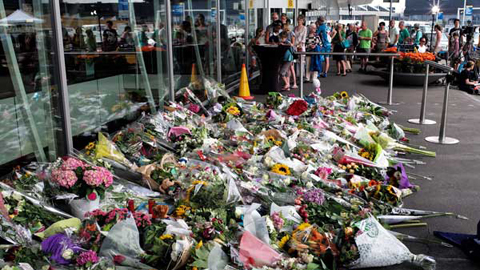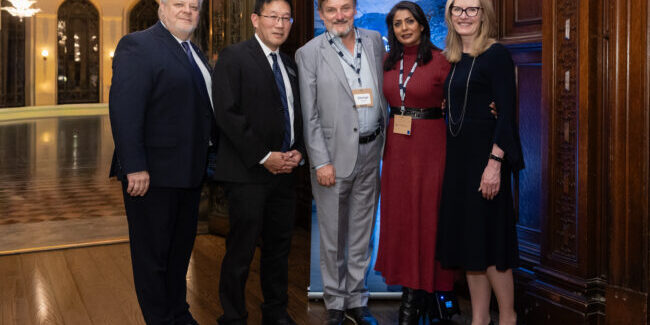
Airlines Flight MH17 which crashed in the Ukraine on July 18, 2014
killing all 298 people on board (Photo: Roman Boed via Flickr).
Nearly a week after the Malaysian Airlines flight MH17 was destroyed over Ukraine, questions abound over what exactly happened.
Writer Jelena Damjanovic spoke to U of T engineering professor Doug Perovic (MSE) and anthropology professor Tracy Rogers about the procedures − and the challenges − of gathering scientific evidence and performing accurate analysis to determine the causes of such tragedies.
Perovic is a materials science & engineering professor and a renowned expert in forensic engineering. He currently teaches the only forensic engineering course in Canada, where he challenges students to apply engineering design concepts to real-world problems – learning the tools they need for high-level sleuthing.
Rogers is a forensic anthropologist and director of the forensic science program at the University of Toronto Mississauga. She’s helped identify remains found at the farm of serial killer Robert Picton.
What evidence might the bodies of the passengers provide about the tragedy?
TR: The information provided by the bodies of the victims would be most useful if the bodies were actually examined in place at the scene. The distribution of the remains, along with the patterns of injuries they sustained can help investigators sort out the sequence of events.
Knowing the seat number of each victim, and examining injuries in light of the person’s position on the plane, could provide some insight into which areas of the plane were most impacted.
The usefulness of this type of analysis will depend on the overall degree of destruction and degree of decomposition that has already taken place.
What evidence, if any, can be gleaned once bodies have been moved by non-professionals after decomposing for days?
TR: That is very difficult to say. It really depends on what they are trying to learn. Mainly they will be concerned with identification of the bodies, but some of the injury patterns might be informative – even information like whether or not the body was burned could be useful.
Now that the bodies have been moved from the scene, the investigators will have to ID the bodies to find out who they are, link that info to their seat placement and then examine the injuries to see if they can provide insight into where or how the plane was hit, etc. But the plane itself may prove more useful for this type of analysis.
What methodology and technology would be used to determine the cause of a plane crash?
DP: Let me outline some of the key steps to any investigation:
- Investigators employ the root cause failure analysis (RCFA) procedures.
- All available and relevant background information and data are collected.
- All physical evidence available is collected and reassembled as best as possible to reconstruct the aircraft structure.
- The origin of the failure event is then determined using a wide range of characterization tools, involving spectroscopy, microscopy, etc. as needed.
- The initial cause of the event is determined by analyzing the origin and using a cause-and-effect RCFA approach. This involves assessing all possible causes and the resultant effects, and then eliminating the possibilities to the most probable cause.
- Ultimately, the history of the event from beginning to end is determined in order to fully assess liability and damages.
Who is typically involved in investigating the causes of plane crashes – what bodies or institutions? What about instances when an aircraft crashes over a war zone?
DP: The federal authority of the country where the accident occurred takes the lead. Usually the National Transportation Safety Board (NTSB), Federal Aviation Administration (FAA), aircraft manufacturer and pilot associations are involved.
A crash over a war zone is clearly a problem for the normal course of events. The physical evidence has to be immediately secured and not disturbed until properly documented by experts to do the types of analyses outlined above. I understand that is not the case in Ukraine.




